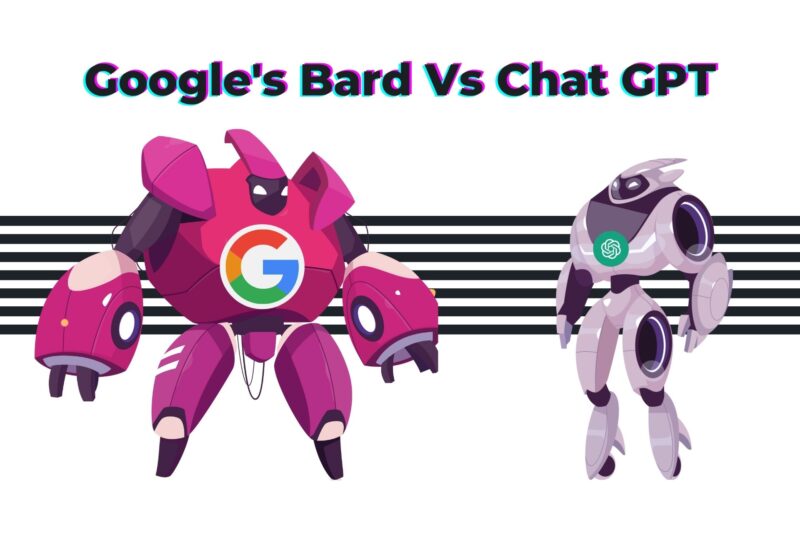Explore Bard, Google’s latest AI language model, designed to rival GPT-3 by OpenAI. Learn about its capabilities and how it stacks up against the competition in natural language processing.
These models have the ability to generate human-like text, perform tasks such as translation and summarization, and even engage in conversation. However, the reigning champion of NLP models, GPT-3, has now received a new challenger in the form of Google’s recently announced Bard. Google is no stranger to AI, and with Bard, the company is seeking to establish itself as a major player in the NLP space. Google has also announced a new NLP model called LaMDA (Language Model for Dialogue Applications) as part of its ongoing efforts in this field.
So, what is Bard and what sets it apart from GPT-3? In this article, we’ll take a closer look at Google’s latest AI language models and what it means for the future of NLP.
What is Bard?
Bard is a state-of-the-art language model developed by Google, designed to perform a wide range of NLP tasks. Like GPT-3, Bard is based on the transformer architecture and is trained on a massive amount of text data. However, the exact details of Bard’s architecture and training data are not yet known, as Google has been tight-lipped about the model’s specifics. The company has only stated that Bard is designed to be highly efficient and scalable, allowing it to perform well even on resource-constrained devices.
What Makes Bard Different from GPT-3?
While the exact details of Bard’s architecture and capabilities are not yet known, it is safe to say that Google has taken a different approach with its latest NLP model. One of the key differences between Bard and GPT-3 is the target audience. While GPT-3 is aimed at businesses and researchers looking to incorporate AI into their products and services, Bard is being marketed as a solution for consumers. This means that Bard will likely be integrated into Google’s existing consumer-facing products, such as Google Assistant and Google Search.
Another key difference between Bard and GPT-3 is the training data. GPT-3 is trained on a massive amount of text data, including web pages, books, and other sources. However, the training data used for Bard is believed to be more focused and relevant to consumer-facing applications. This could give Bard a more natural and human-like language generation ability, making it better suited for consumer-facing applications.
Finally, it is worth noting that Google has a long history of developing NLP models, and the company’s expertise in this area could give Bard an edge over GPT-3. Google has been working on NLP for over a decade, and the company’s deep understanding of the field could result in a more refined and polished language model.
What is LaMDA?
LaMDA (Language Model for Dialogue Applications) is another NLP model developed by Google, with a focus on dialogue applications. The model is designed to generate more human-like and natural responses in conversation, making it ideal for use in chatbots and other conversational AI applications.
Like Bard, the exact details of LaMDA’s architecture and training data are not yet known. However, Google has stated that the model is highly efficient and scalable, allowing it to perform well on resource-constrained devices.
AI-Powered Search Plans
In addition to the release of Bard and LaMDA, Google has also announced its plans for AI-powered search. The company aims to make search results more accurate and relevant to the user by incorporating AI into the search process. This will involve using NLP models like Bard and LaMDA to understand the intent behind a user’s search query and generate more relevant results.
Google is also using AI to improve the ranking of search results. The company’s AI algorithms will analyze the content of web pages and other sources to determine their relevance to the user’s search query. This will result in more accurate and relevant search results, making it easier for users to find the information they are looking for.
Google’s AI-powered search plans are a clear indication of the company’s focus on NLP and its commitment to developing advanced AI models. By incorporating AI into its search products, Google is seeking to improve the user experience and establish itself as a leader in the NLP space.
What Does the Future Hold for Bard and LaMDA?
The future looks bright for Bard and LaMDA, as Google continues to invest in NLP and the development of advanced AI models. The company’s expertise in this field, combined with its focus on efficiency and scalability, makes Bard and LaMDA well-positioned for success in the NLP market.
As AI continues to play a larger role in our daily lives, it is likely that NLP models like Bard and LaMDA will become increasingly important. These models have the potential to revolutionize the way we interact with technology, making it easier and more natural for humans to communicate with machines.
In conclusion, the unveiling of Bard and LaMDA by Google is a significant step forward for the field of NLP and AI. The company’s focus on developing advanced and efficient AI models, combined with its expertise in the field, makes Bard and LaMDA a force to be reckoned with in the NLP market. As the future of AI continues to unfold, it will be interesting to see the impact that these models have on the industry and the wider world.
Source : Google
https://blog.google/technology/ai/bard-google-ai-search-updates/








